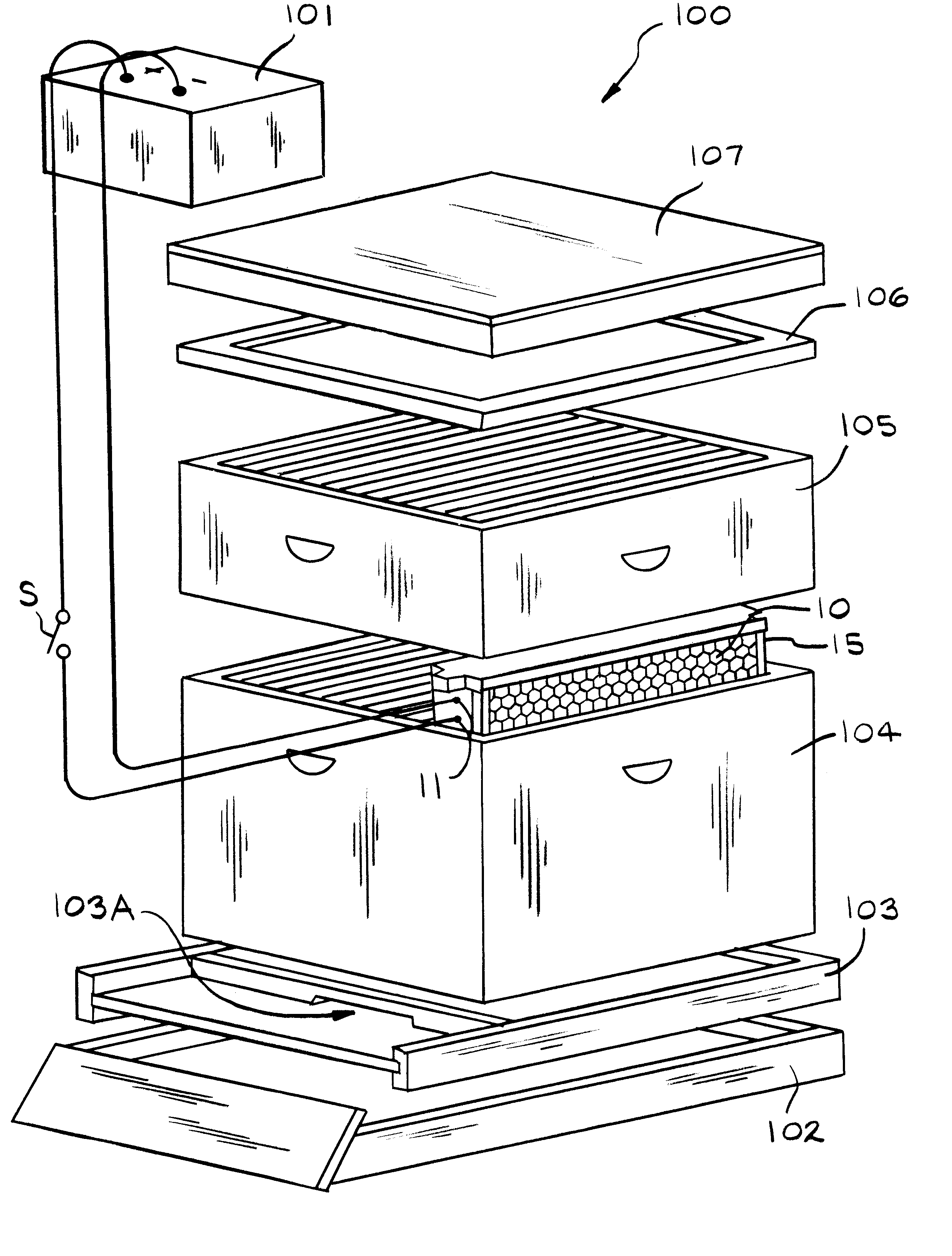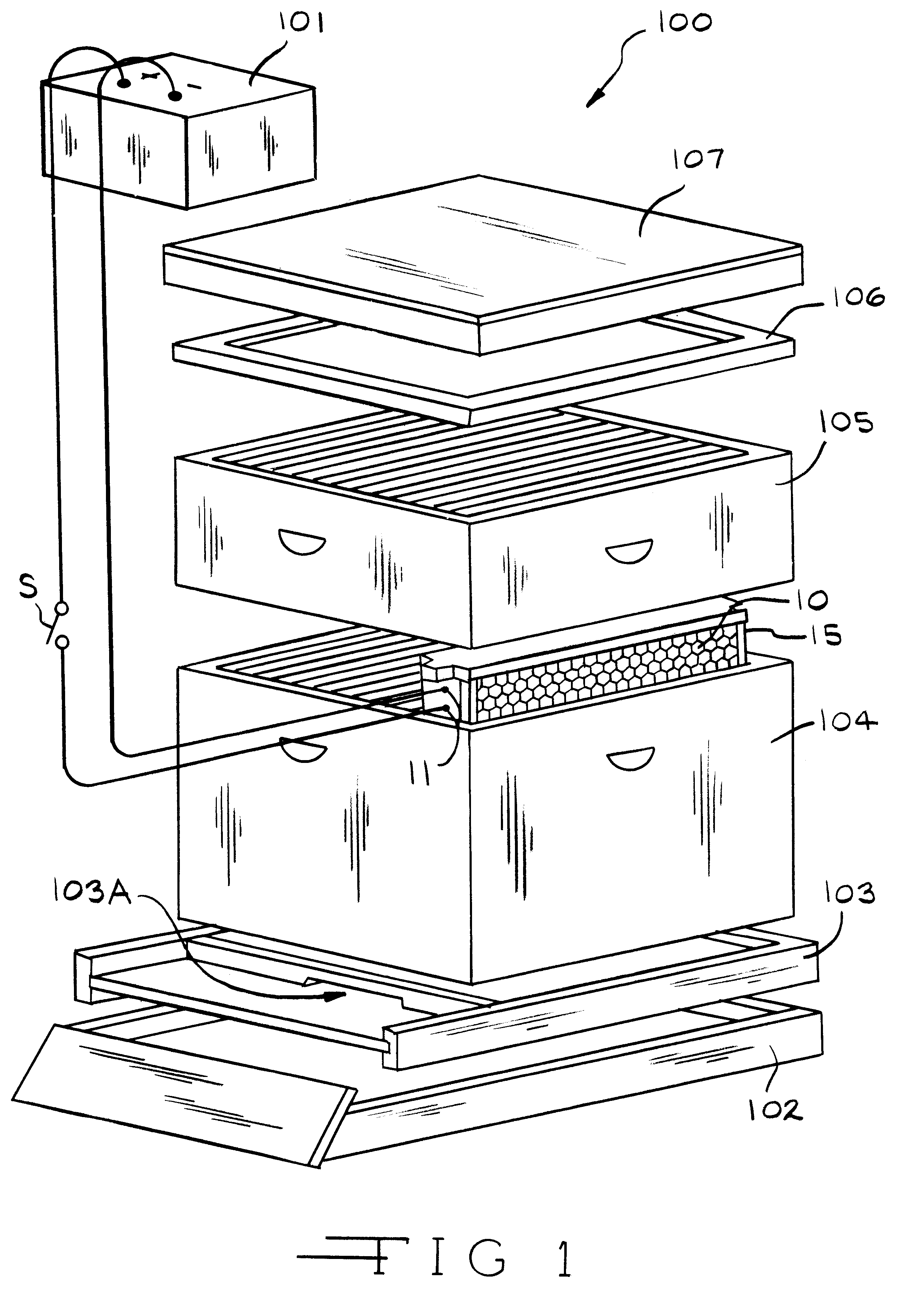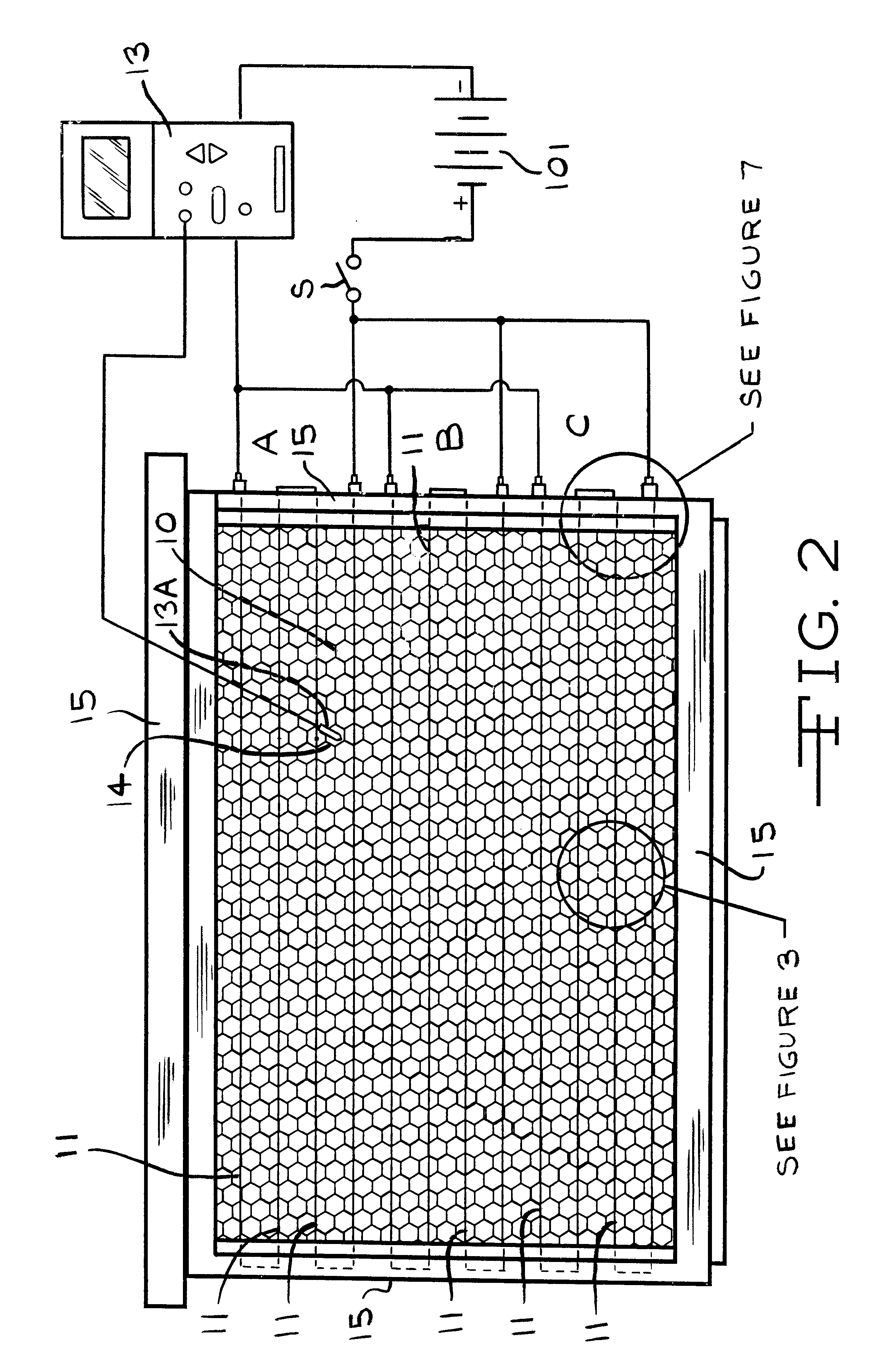Method and apparatus for control of mites in a beehive
a beehive and mite technology, applied in the field of beehives selective killing methods and beehives, can solve the problems of not being universally used, laborious methods, and practically sterile, and leave residues in honey
- Summary
- Abstract
- Description
- Claims
- Application Information
AI Technical Summary
Problems solved by technology
Method used
Image
Examples
example
One set of tests were performed on one day (Tests 1-3) and the rest of the tests (Tests 4-5) were performed the next day. A 12 V battery 101 was used in the test. Drone bee pupae were about 1-2 days prior to emerging as adults from the comb 10. Mites were naturally infested in the colony. The results are shown in Table 1. The cells were opened immediately (Tests 1-3), or after the temperature (T2) was reached for 3 minutes (Tests 4 and 5) and the mites scored as live or dead.
It takes more than one hour if all the wires are connected in series as one circuit (about 12 times across the frame, 6.5 Ohm). The temperature increased to 35.degree. C. (from 27.degree. C.) in 45 min. Thus the tests were performed in Sections A, B and C of the comb 10A. Only 1 / 3 of the frame was connected in sections A, B and C of FIG. 2 each time in Tests 1 to 5. The temperature of the drone bee pupae P reached over 40.degree. C. within 4-8 minutes. The wax foundation 12 near the wire was hot and melted. The ...
PUM
 Login to View More
Login to View More Abstract
Description
Claims
Application Information
 Login to View More
Login to View More - R&D
- Intellectual Property
- Life Sciences
- Materials
- Tech Scout
- Unparalleled Data Quality
- Higher Quality Content
- 60% Fewer Hallucinations
Browse by: Latest US Patents, China's latest patents, Technical Efficacy Thesaurus, Application Domain, Technology Topic, Popular Technical Reports.
© 2025 PatSnap. All rights reserved.Legal|Privacy policy|Modern Slavery Act Transparency Statement|Sitemap|About US| Contact US: help@patsnap.com



